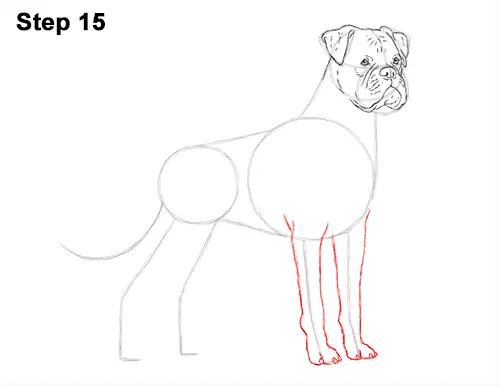
Step 15: Use the lines on the right side of the body as guides to draw the boxer's front legs. Lightly sketch the shape of the legs as you follow the path of the guide lines. Bend the shape of the leg to create the joints. When you get the basic structure of the leg right, darken the lines. Add a few tiny triangle-like shapes at the tip of the foot for the nails.
Use the line to the left to draw the dog's front leg on the other side the same way. First lightly sketch the basic shape of the leg around the guide line. When you get the structure of the leg right, darken the lines. Don't forget to add the boxer's nails at the bottom!
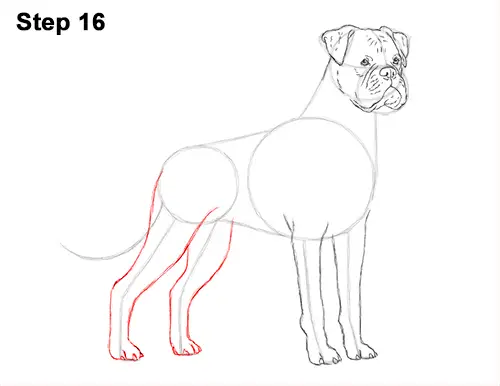
Step 16: Use the lines on the left as guides to draw the boxer's hind legs. Start by lightly sketching the shape of the leg as you follow the basic path of the guide line. The top part of the hind legs should be wider than the bottom part. The middle section should be curvy for the muscle structure. Darken the lines when you get the shape right. Draw a couple of lines at the bottom to separate the toes and add the triangle-like nails too. Draw the other hind leg the same way. Sketch lightly at first to get the shape right, then darken the lines. Make the shape curvier to indicate the leg is bending backward at the joint.
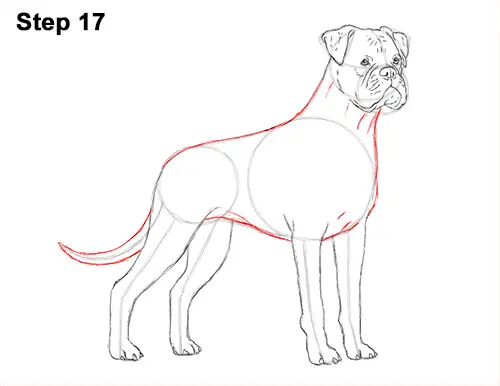
Step 17: Use the remaining lines as guides to draw the rest of the dog's body. Simply darken the outer edges of the initial guides to create the shape of the body. Add a few lines under the head, along the neck, to indicate the loose skin found there. Use a curved line on the left as a guide to draw the boxer's pointy tail.
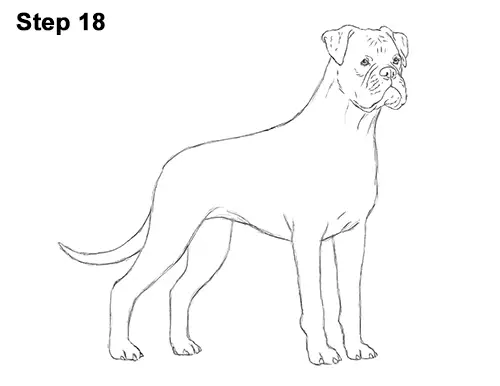
Step 18: For a cleaner look, erase as much as you can of the initial guide lines. Don't worry about erasing all of the guides. It's okay to leave some behind. Re-draw any final sketch lines that you may have accidentally erased.
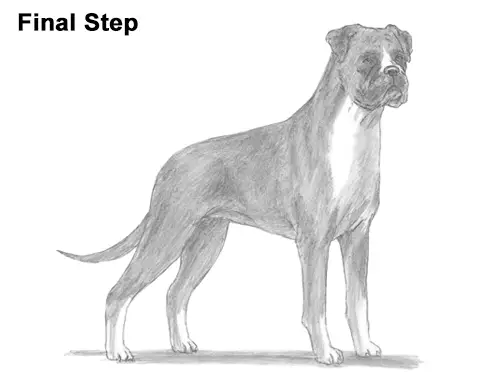
Final Step: Add some shading to your boxer drawing to give it more dimension and volume. Pick the direction of the light source when shading so that the shadows are consistent with it. Vary the pressure on your pencil to get different degrees of tonal value.
Add a cast shadow underneath. This helps ground the dog so it doesn't appear to be floating.
You can add even more value throughout your drawing for extra detail. You can also skip this step entirely if you'd like your dog to be white. For a standard boxer look, use a dark value for the ears, muzzle and around the eyes, and a medium value for the rest of the head. Boxers have smooth, shiny coats, so try to shade evenly and smoothly to get the appropriate coat. As you add the value for the coat, leave a section on the chest and on the bottom of the legs blank.
Use strokes that go in the general direction of the dog's fur as you shade. Shading can be very time-consuming, so be patient and take breaks. It's always a good idea to use reference as you draw. If you have a pet boxer or a similar breed, try to duplicate its coat on your drawing! Remember to pause the video after each step to draw at your own pace.
Thanks for watching! Subscribe to the How2DrawAnimals YouTube Channel for a new tutorial every Tuesday.
To learn how to draw popular cartoon characters, visit EasyDrawingTutorials.com.
RELATED TUTORIALS
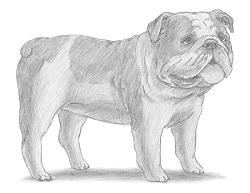 |
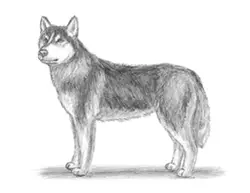 |
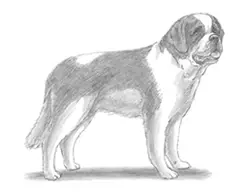 |







